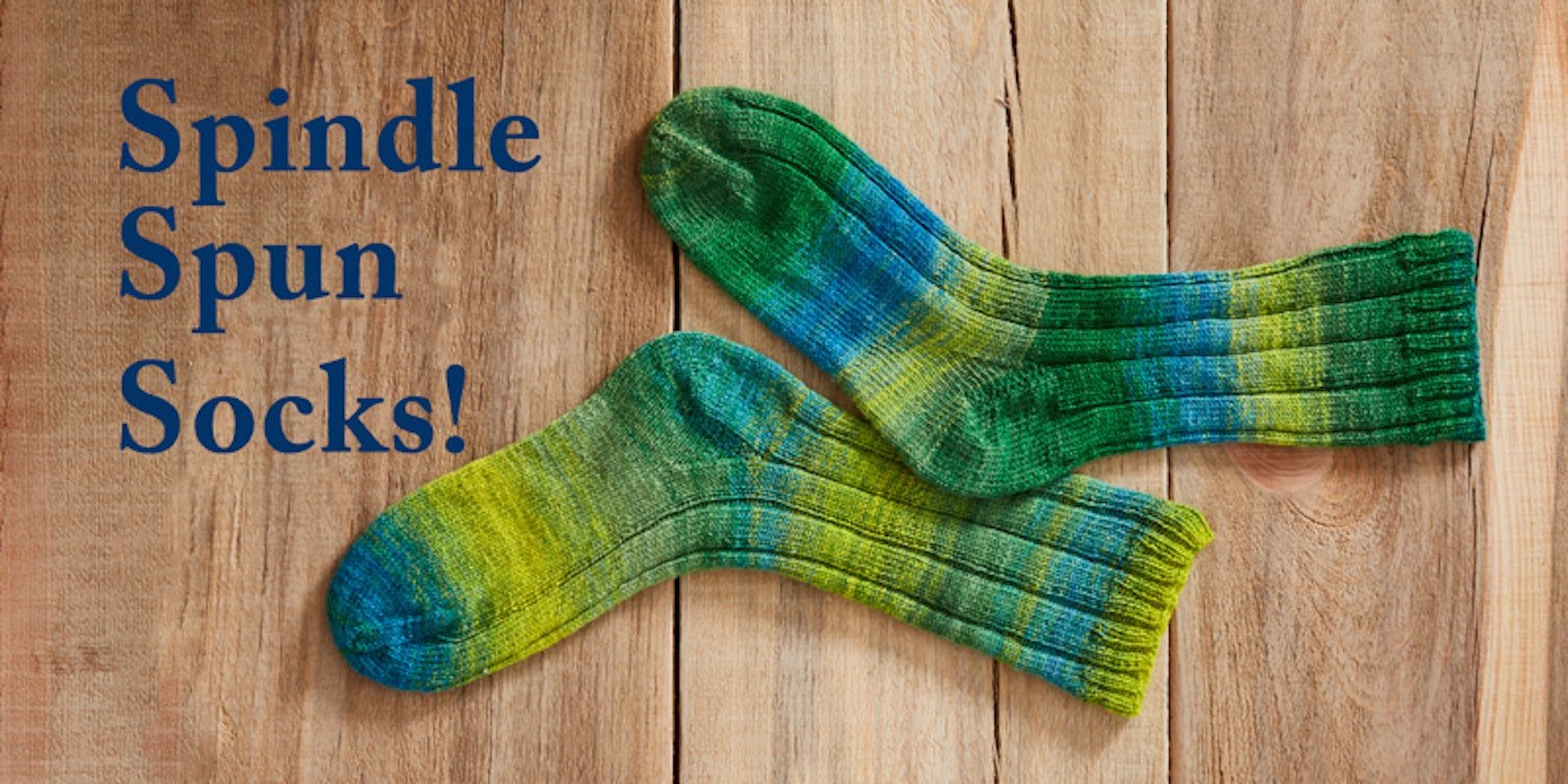I always love wearing handspun socks, and they are my preference in the Minnesota winters, keeping my feet warm and dry. I have encountered many people who think that there is some magic to making sock yarn, and I have to say I have not found any. I have tried many variations of spinning for socks: three-ply, four-ply, cabled, adding silk to the fiber, adding nylon, adding mohair. In the end, I knit socks with whatever yarn I spin. In fact, most of the 4-ounce braids I get from indie dyers get turned into sock yarn. In general, I divide the roving or top into two lengthwise to preserve color effects or widthwise to blend the colors more.
When I decide to spin specifically for socks, I prefer a tightly plied two-ply yarn. I spin my sock yarn most often on low-whorl spindles, adding a fair bit of twist but not letting the yarn get wiry. I use both long draw and short draw when spinning sock yarn, though not in the same project, and I have found little difference in the wear of the finished sock between drafting methods.
Devin learned to knit socks from his great aunt, Tante Fanni.
I fill up two spindles and then wind a two-stranded plying ball and ply from that. When plying, I add a lot of twist until the plying angle of twist is about 45 degrees. Once I have plied all the yarn, I skein it and make sure to secure it in at least four places with ties. I then wash it in hot water with some dish soap by soaking it for fifteen minutes, or until I can put my hands in the water comfortably, and then I rinse it thoroughly in cold running water, squeezing the skein to make sure that all the soap is out and the cold water gets through all of the yarn. I then double up the skein, wring as much water as I can out of it, and put my hands through it and give it one gentle snap to realign the skein. I hang it to dry unweighted.
In my experience, the best handspun socks are the ones you will make and wear. I have knitted socks with yarns I had spun for sweaters, for lace, or just for the sake of spinning. I enjoy wearing my socks, and if I have to darn them after one winter instead of after two, it makes little difference to me. I will use almost any breed for spinning sock yarn, though my preferred breeds are Tunis, Dorset, and Suffolk, as they all make a deliciously bouncy yarn that holds up well. I have great success with Corriedale, Polwarth, Romney, and Shetland; almost any breed I have tried has worn well. The important thing is to choose a gauge appropriately firm for socks. I knit my socks on size 1 needles, and I would use size 0 if my hands did not hate that needle size.
Tante Fanni’s Socks
I learned to knit socks across language and generational barriers. The year I turned fourteen, I spent the summer with my grandmother in Germany. While she worked, I spent the mornings with my great aunt, Tante Fanni. We bonded over gardening, cake, and socks. I admired my uncle’s hiking socks, which Tante Fanni had knitted, and once I was able to communicate this, she pulled out a pair she was knitting. She started showing me what she was doing, and soon we each cast on a new sock and knitted them at the same time together, sitting on her front steps. With the help of a German/English dictionary and a lot of sign language, she showed me how to turn a heel, knit an instep, and decrease for toes. I left at the end of the summer with several pairs of socks, one of which we had knitted together, and a love of knitting socks.
Detail of Devin’s sock heel.
Tante Fanni did not refer to a pattern; everything was in her head, and that is how she taught me. She scoffed a little when I wrote things down; after all, I would have socks to refer to after I left. Since then, I have knitted more than a hundred pairs of socks from the same basic pattern, making a few slight changes to better fit my particular feet, which are of the wide and paddle-like variety.
This pattern is extremely forgiving of yarn irregularities and adaptable to various gauges and sizes. The original socks include the entire leg worked in k2, p2 ribbing and a very square heel, but I have adjusted those to make the fit better for myself. I have switched to k6, p2 ribbing for the leg as I feel it fits my large calves and ankles better and is more comfortable, and I have made the heel more open and less square. These socks have a three-needle bind-off rather than Kitchener stitch to close the toe; I do not notice any rubbing and feel it is faster and easier for me to do.
—Devin Helmen
Devin Helmen’s handspun sock pattern, inspired by his great aunt, can be found in the Spin Off Winter 2018 issue.
Cubicle Monkey by day, Fiber Fanatic by night, Devin Helmen has been feeding his fiber obsession since he taught himself to spin at age eight. He spins, knits, and weaves in beautiful Minnesota. He has a passion for spindles and everyday textiles and blogs, intermittently, at www.afewgreenfigs.blogspot.com.
Featured Image: Devin plied the yarn for his handspun socks with a 45-degree twist angle for better wear. Photos by George Boe.
Pamper your feet with a pair of handspun socks!



